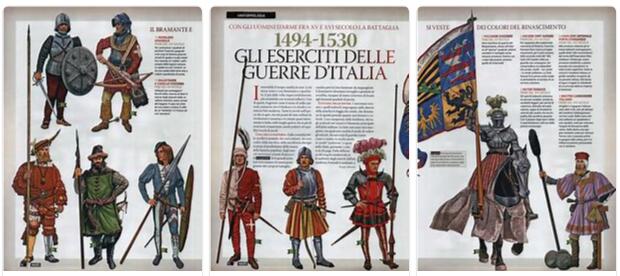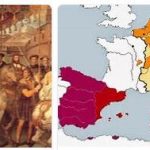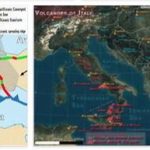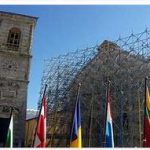Thus ended a very fortunate age for the peninsula, which began in 1494: an age, in the opinion of contemporaries and posterity, ruinous and decadent for the Italian homeland, as well as the principle of major ruin and decadence.
Collapse of dynasties, decline of economic activities, diversion or dispersion of men. There was, in Italian life, something that was stagnating, as if the intimate creative energies were weakening, due to exhaustion or fatigue, having already given, within the framework of those political orders and that civilization, all their fruit. Certain economic activities, which reached a high degree of development under a state and city regime or under an Italian quasi-monopoly in Europe, lost their vigorous pace in a regime of greater political and economic equilibrium between the states of the peninsula, and in a regime of competition , created, to Italian industries, by the growing industry of other countries and by the mercantilist policy of absolute governments. Then there were wars and foreign domination, sacking of cities, plagues and famines that were indivisible companions of wars, entire provinces deserted by men and cattle. In short, destruction and dispersion of wealth, vast robbery, Italy becomes the promised land of all the destitute and hungry in search of fortune. And then, deviated or broken currents of traffic, lively hearths of profoundly disturbed or even dull economic activity, vigorous bourgeois nuclei thinned by numerous emigrations. In addition, in the 16th century, the economic facts resulting from the discovery of America, some immediately perceived, such as the development taken by the trade of oceanic countries, especially Portugal, in competition with Venice, others only later, from the mid-16th century. onwards, like the influx of precious metals into Europe. There was a debasement of the old wealth, resented especially by the Italians who had capital invested abroad, that is, credits, and which now these capitals realized in currency devoid of the old purchasing power. Hence the great bankruptcies of banks in Italy in the 16th century. However, the wool and silk industries are really declining in Tuscan cities and elsewhere; the trades linked to those industries and directed towards the countries of the Levant, as are the Venetian trades, enter the downward phase; the merchant navy gives ground, especially in the trade to the northern seas, due to the competition of the other navies, and weakens the colonies of the Italians in Antwerp, also due to their fragmentation according to the states or cities of the peninsula from which they come. Many links in the dense Italian banking network are broken in those countries and elsewhere: and there are houses which withdraw from business, investing their money in public debts or otherwise; others who emigrate abroad, to Geneva or Lyon, Paris or Antwerp. Economic, political and religious reasons explain this migration, of which the most conspicuous example is given by the Lucchesi. And there are also growing signs of artisan emigration, determined by local industry crises, by foreign references.
And yet there is still some movement in this century. According to ITYPEAUTO.COM, the decay is gradual, as of something that was very much alive and that still retains reasons for life. Some new activity takes over from the old ones. If, as an organized collectivity, Italians decline, their importance as individuals does not decline: a little merchants, a little adventurers, a little entrepreneurs and discoverers, sometimes truly brilliant. They prevail over all the others, in Antwerp, in terms of initiatives designed to create industries and subsidiary activities of the commercial function of the port. Genoa has lost the Levante, but is gaining the Ponente. Economically speaking, it is almost part of the Spanish monarchy. Many Genoese in Spain. There they have businesses, banks, contracts, they carry out large financial transactions; actively engage in Spanish-American traffic, and they send some thin migratory streams towards Spanish America, made up of merchants, entrepreneurs and plows, city founders (Giovanni Battista Pastine, founder of Valparaiso); they give to those countries some Italian imprint in terms of culture, within the framework of the Spanish colonization. Finally, the influx of Italian people in Poland followed and grew, especially in the years that Bona Sforza was queen there (1518-56). Here too, bankers, importers and traders of velvets, damasks, silk, perfumes, wines; introducers of some industries, such as goldsmithing; organizers of public services such as post offices; wheat exporters, of which there is growing research, including in Italy, especially by Venetians and Genoese. It is the time that the Polish cities seemed, as it was then written, quasi suburbium Italiae and poland Italiam factam esse .









